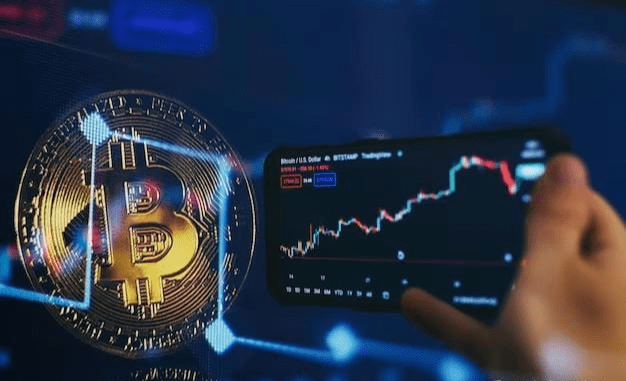
How to roll positions:
In the crypto space, you need to find a way to earn 1 million in capital first. The only way to grow from a few thousand to 1 million in capital is one path.
That is rolling positions. However, the risk is relatively higher! (Proceed with caution)
Once you have 1 million in capital, you will find that your life seems completely different. Even if you don’t use leverage, holding spot positions will appreciate.
20% means you have 200K; 200K is already the income ceiling for most people in a year.
Moreover, when you can grow from tens of thousands to 100K, you will grasp some ideas and logic for making big money. At this point, your mindset will also calm down a lot; afterwards, it’s just about copying and pasting.
Don’t always talk about millions or billions; start from your actual situation. Bragging only makes you feel good. Trading requires the ability to recognize the size of opportunities; you can’t always trade lightly or heavily. Usually, trade with small positions, and when a big opportunity arises, then bring out the heavy artillery.
For example, rolling positions is something you can only do when big opportunities arise. You can’t keep rolling; missing out is fine because you only need to roll successfully three or four times in your life to go from 0 to tens of millions. Tens of millions are enough for an ordinary person to upgrade.
The ranks of wealthy individuals.
Points to note when rolling positions:
1. Sufficient patience. The profits from rolling positions are enormous; as long as you can roll successfully a few times, you can earn at least tens of millions or even billions.
You cannot easily roll; you need to find high certainty opportunities.
2. High certainty opportunities refer to a horizontal consolidation after a sharp drop, followed by an upward breakout. At this time, the probability of following the trend is very high.
Yes, identify the point of trend reversal and get on board from the start.
3. Only roll long positions;
▼ Risks of rolling positions
Let’s talk about rolling strategies. Many people think this is risky; I can tell you the risk is very low, much lower than the logic of the futures trades you are executing.
If you only have 50K, how do you start with 50K? First, this 50K must be your profit; if you still have losses, then don’t look at it.
If you open a position at Bitcoin 10K with 10x leverage and use a cross-margin mode, only opening 10% of the position, that means you’re just using 5K as margin; this is effectively 1x leverage with a 2% stop loss. If you hit the stop loss, you only lose 2%, just 2%? 1,000. How do those who get liquidated end up getting liquidated? Even if you get liquidated, isn't it just a loss of 5K? How can you lose everything?
If you are correct and Bitcoin rises to 11K, you continue to open 10% of total funds, similarly setting a 2% stop loss. If you hit the stop loss, you still make an 8% profit; where’s the risk? Isn’t it said that the risk is high? And so on...
If Bitcoin rises to 15K, and you are able to add positions smoothly, during this 50% market move, you should be able to earn around 200K. Capturing two such market moves means you would have around 1 million.
There is fundamentally no compounding; 100 times is achieved through two times 10 times, three times 5 times, four times 3 times, not through 10% or 20% monthly compounding. That is nonsense.
This content not only has operational logic but also contains core trading principles and position management. As long as you understand position management, you cannot lose everything.
This is just an example; the general idea is like this, and the specific details need to be pondered further.
The concept of rolling positions itself is not risky; not only is it not risky, but it's also one of the most correct approaches in futures trading. The risk lies in leverage. You can roll with 10x leverage or with 1x, and I generally use two to three times; capturing two successful trades is not the same as having dozens of times the profit? Moreover, you can use a fraction of leverage, which has nothing to do with rolling positions; it’s clearly your own choice regarding leverage. I never said to operate with high leverage.
Moreover, it is always emphasized that in the crypto space, only invest one-fifth of your money, and only invest one-tenth of your spot money to trade futures. At this point, the funds for futures only account for 2% of your total funds, and use only two to three times leverage, and only trade Bitcoin. This way, you can say you have minimized the risk to a very low level.
If you lose 2K out of 100K, would you feel hurt?
Always using leverage makes it meaningless; people always say that rolling positions are risky, that making money is just good luck. Saying these things is not to convince you; convincing others is pointless. I just hope that those with similar trading philosophies can play together.
However, there is currently no filtering mechanism, and there are always jarring voices appearing, interfering with the recognition of those who want to see.
▼ Capital Management
Trading is not filled with risks; risks can be mitigated through capital management. For example, I have a futures account of 200K USD and a spot account ranging from 300K to 1,000K USD. When opportunities are significant, I inject more; when there are no opportunities, I inject less.
With good luck, you can earn over 10 million RMB in a year, which is already quite sufficient. With bad luck, the worst-case scenario is that your futures account gets liquidated; it doesn’t matter because the profits from spot can compensate for the losses from futures liquidation. After compensating, you can jump back in. Is it really impossible to earn even a penny from spot in a year? I’m not that bad.
You may not make money, but you cannot lose money. So I have long since been liquidated, and I often take one-fourth or one-fifth of my profits from futures and save them separately. Even if I get liquidated, I will still retain part of my profits.
As an ordinary person, my personal advice is to use one-tenth of your spot position to trade futures. For example, if you have 300K, use 30K to trade. If you expose yourself, then inject the profits from the spot when you’re ready. After experiencing ten or eight liquidations, you will definitely grasp some insights. If you still can’t figure it out, then don’t trade; this field is not suitable for you.
▼ How small funds can grow
Many people have misconceptions about trading; for example, they think that small funds should be used for short-term trades to grow their capital, which is completely wrong. This mindset is purely an attempt to exchange time for space, seeking to get rich overnight. Small funds should be used for medium to long-term trading to grow.
Is one sheet of paper thin enough? A sheet of paper folded 27 times is 13 kilometers thick. If folded 10 more times, folded 37 times, it would be thicker than the Earth. If folded 105 times, the entire universe would not be able to contain it.
If you have 30K in capital, you should think about how to triple it in one wave, and then triple it again in the next wave... that way you will have four to five hundred thousand. Instead of thinking about making 10% today and 20% tomorrow... doing so will eventually ruin you.
Always remember, the smaller the capital, the longer the position should be. Rely on compounding to grow big. Don’t do short-term trading for small profits.


